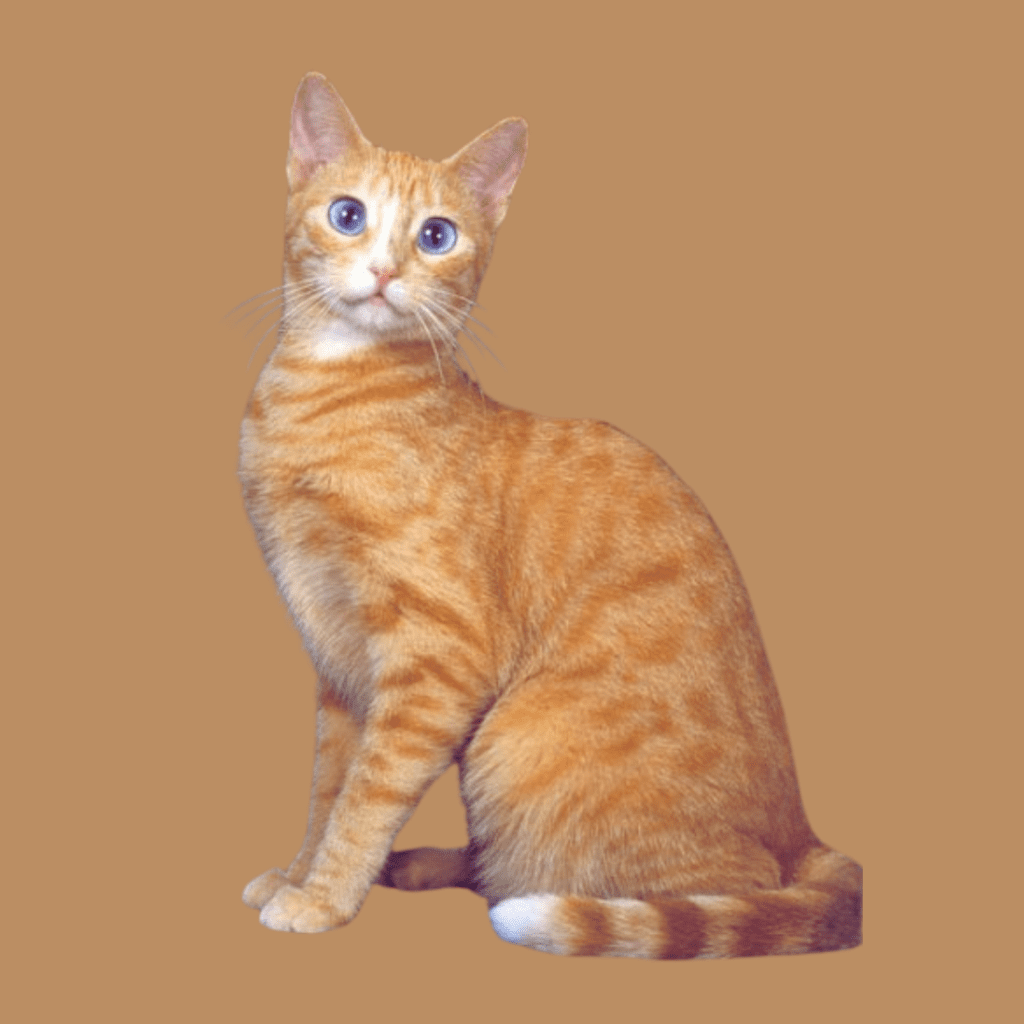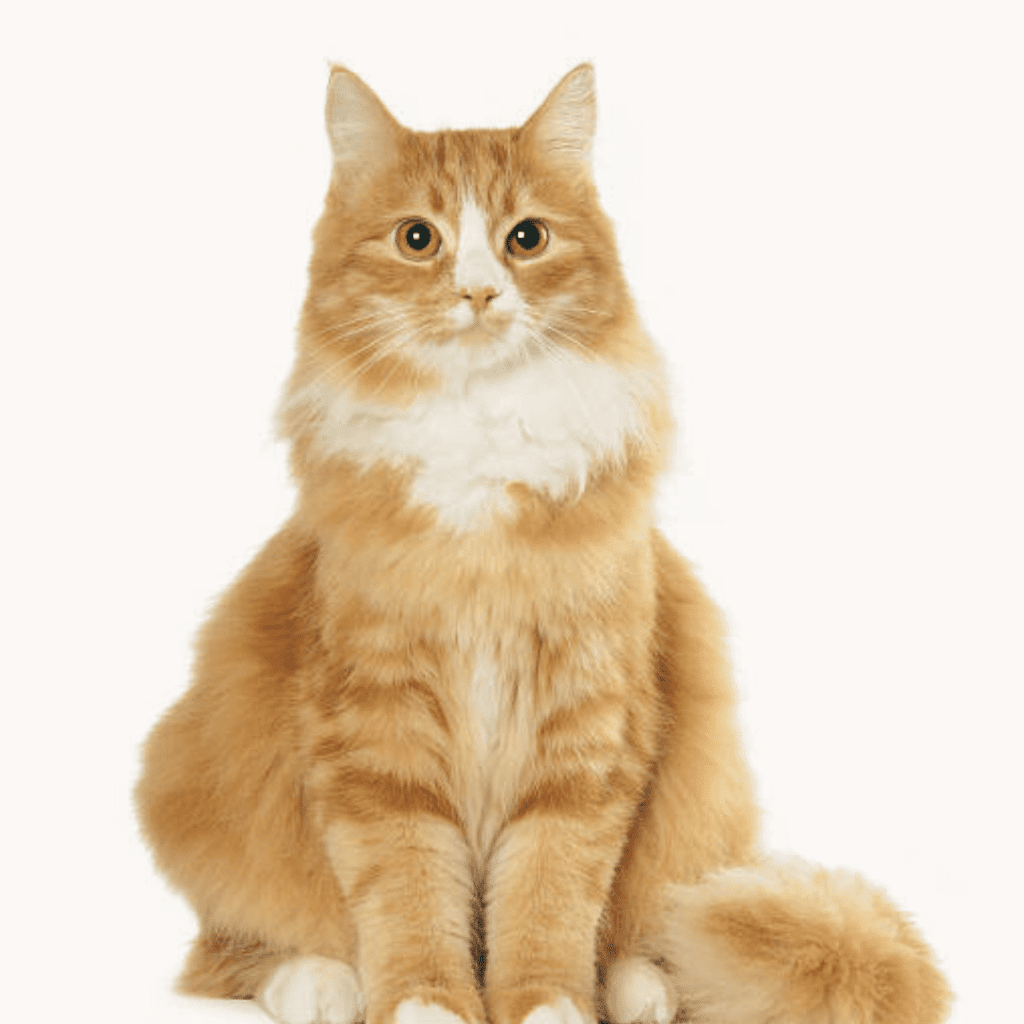Do you ever wonder why some cats have those amazing blue eyes that grasp your attention?
In the focused environment (or world) of cats with blue eyes, there’s a phrase, ojos azules, which specifically speaks about those cats.
This isn’t simply about how beautiful they are, though no one can deny that–but it’s also about how rare they are.
According to a study by the American Veterinary Medical Association, only about 3% of cats are born with blue eyes. This rarity is largely due to the genetic factors involved.
Blue eyes in cat Breeds are often linked to the presence of the W (white) gene, which can also affect their hearing.
Not many cats shine blue eyes and carry that sense of mystery and charm around with them.
Now, we’re about to get into what makes these cats so special how they ended up with blue eyes in the first place, and which particular types of cats demonstrate this spectacular eye color.
A discerning reader, such as yourself, will surely comprehend that we’re delving into some very fascinating material about these blue-eyed wonders.
Ojos Azules cat Breed Overview
Here’s a concise overview of the Ojos Azules cat breed:
| Attribute | Details |
|---|---|
| Breed Name | Ojos Azules |
| Origin | United States |
| Appearance | Medium, muscular with large blue eyes |
| Coat Color | All colors and patterns |
| Coat Length | Short to medium |
| Temperament | Friendly, playful, affectionate |
| Size | Medium |
| Weight | Males: 8-12 lbs; Females: 6-10 lbs |
| Lifespan | 12-15 years |
| Health Issues | Generally healthy, some genetic concerns |
| Grooming Needs | Low to moderate |
| Activity Level | Moderate to high |
| Good with Kids/Pets | Yes |
What Makes Ojos Azules cat’s eyes blue?
I unsurprisingly find that Ojos Azules cats have blue eyes not because of their sheer coat color but thanks to an unusual change in their eye color genes.
These cats are very unique since they don’t have to be a certain color to have blue eyes.
You could have a black cat, a light fluffy ball, or even one with several different spots, and they all can have those deep blue eyes.
Usually, when cats have eyes the color of the sky, it’s because of their coat being a certain way, like those Siamese cats–but no, Ojos Azules cats break that rule they’ve got a gene mutation working solo to make their eyes the color of the sky, without thinking much about their coats.
It regards a special thing where their eyes don’t have as much melanin up front. Melanin’s usually what decides eye color by how much of it there is–but take that away, and instantly, light-colored eyes.
The blue we are discussing isn’t a color they actually have sitting there. It’s because of light bending and bouncing around in the iris, very amazing like why the sky is far above and appears blue.
It has nothing to with the color on their fluff; that’s why Ojos Azules cats can essentially be any color and still demonstrate vivid blue eyes without needing to be white or have spectacular coat patterns.
The Genetics Behind Blue Eyes

The details behind why some cats have blue eyes are quite complicated and aren’t always easy to explain. To simplify the details, it’s primarily focused on genetics. The important player here is the O gene which could make a cat’s eyes blue by influencing how much melanin is produced in their iris. This gene is dominant, meaning it’s very strong in deciding eye color.
But, even if a cat has the O gene, it doesn’t mean their eyes will be blue definitively since other genetic factors are at play too.
What’s also interesting is how blue eyes in cats can be linked to the color and patterns of their coats. Take Siamese cats as an example — they’re very well-known for their blue eyes, which come from a certain gene that changes both their coat and eye color.
Moreover, in other cat breeds, finding a cat with blue eyes might be because of unusual genetic combos or changes.
Breeds Known for Blue Eyes
When speaking about amazing cat breeds that often have blue eyes, there’s a lot you might think about. Some cats out there are pretty famous for mastering a wonderful eye color.
Siamese Cats
- Description: Most people know Siamese cats because they almost always walk proudly with blue eyes.
- Appearance: Their look is extremely spectacular, with a cream-colored undercurrent going on and darker colors staying at their feet and ears.
- Genetics: The reason they’ve got those icy eyes? They’ve got a unique gene that reacts to how warm or cold their body is. Pretty neat.
Persian Cats
- Color Pattern: Then there’s the Persian crew, especially those with a color-pointed coat pattern.
- Fur Color: Their fur color is lighter on their body but gets darker on the tips, such as their ears and tails.
- Blue Eyes: Blue eyes are pretty typical here, which makes everyone want one.
Himalayan Cats
- Relation to Persians: Now, if we are talking about the same style, you must mention the Himalayans.
- Appearance: These fluffballs are basically cats related to Persians, looking special with their similar coats and blue eyes that are just as beautiful.
Russian Blue Cats
- Eye Color: Moving on, the Russian Blue mainly flaunts bold green eyes–but who says you can’t find one with blue eyes, especially the little ones?
- Unique Look: Do not forget about these silver animals; the way they look at you can be very important.
Birman Cats
- Fur and Eyes: Birmans slide in with semi-long fur and, most often, blue eyes getting the spotlight.
- Appearance: They’ve got a majestic look that makes their blue glance stand out even more.
Ragdoll Cats
- Features: Lastly, we’re hitting on Ragdolls – these giant softies flaunt some striking large blue eyes that go hand in hand with their calm tenor and gorgeous fur.
- Overall Look: Here it is…an interesting combination of fluffy creatures boasting those light blue eyes that we all love. One, if they so choose, may ponder which kitty they’d bring home for fulfillment.
Rarity of Blue-Eyed Cats
Blue eyes in cats are indeed special but not as rare as one might think. The prevalence of blue-eyed cats can vary depending on the breed and genetics involved.
Breed-Specific Blue Eyes
- Siamese Cats: Blue eyes are a characteristic feature of Siamese cats. If you’re dealing with a Siamese or a similar breed known for blue eyes, you’re more likely to see these striking, icy stares regularly.
- Other Breeds: For breeds where blue eyes are not typical, spotting a cat with blue eyes is like finding a four-leaf clover.
Domestic Shorthairs
- General Occurrence: Blue eyes in domestic shorthairs (common house cats) are quite rare. Most domestic cats have green, yellow, or golden amber eyes.
- Surprising Find: Occasionally, you might come across a domestic cat with blue eyes, which can be a delightful surprise.
Genetic Factors
- Genetics and Ancestry: The presence of blue eyes often comes from specific genes or ancestry from breeds known for having blue eyes. This unique eye color can be a result of these genes working their magic or a bit of luck.
While blue eyes are certainly special, they are not exceedingly rare, especially within certain breeds. Understanding the interplay of genetics, breed, and chance can provide insight into why blue-eyed cats are so captivating
Health Considerations for Blue-Eyed Cats

When you see a cat with blue eyes, you notice its eye-catching and undeniable beauty first. However, there are some important health considerations to keep in mind:
Hearing Issues
- Deafness Risk: Some white cats with blue eyes may face hearing challenges. The gene responsible for their blue eyes can also affect the inner ear, potentially leading to deafness.
- Variability: Not every snow-white, blue-eyed cat is deaf; some might only have issues in one ear.
Light Sensitivity
- Bright Lights: Blue-eyed cats are more sensitive to bright lights. Their eyes lack the pigment that provides shade in cats with deeper eye colors, causing them to squint or seek shelter from sunlight.
- Managing Sensitivity: Consider ways to minimize their exposure to harsh sunlight.
Vision Challenges
- Albinism: Cats with rare genetic conditions, such as albinism, may have weaker vision compared to their dark-eyed peers. This is not a common issue but can affect their overall visual capability.
- Heterochromia: Some blue-eyed cats may have one blue eye and another of a different color due to heterochromia. This genetic trait is usually harmless.
Sunburn Vulnerability
- Sun Exposure: Blue-eyed cats with light fur are more susceptible to sunburn, especially on areas where the fur is thinner, like around the nose and ears.
- Protection: Shielding them from excessive sun exposure is crucial to prevent sunburn and keep them comfortable.
Regular Vet Check-Ups
- Health Monitoring: Regular vet visits are important to monitor these potential issues and ensure overall health.
- Attention to Genetics: While blue-eyed cats may seem similar to their multi-colored-eyed counterparts, their unique genetics require extra care.
The enchanting gaze of a blue-eyed cat comes with its own set of health considerations. By being vigilant and providing appropriate care, you can ensure your blue-eyed feline leads a happy and healthy life.
Fascinating Facts About Blue-Eyed Cats

Genetics: Blue eyes in cats are due to the lack of melanin in the iris and are influenced by various genes, including the O gene.
Breed Fame: Breeds like the Siamese, Ragdoll, and Birman are known for their striking blue eyes.
White Fur Link: Blue eyes are often seen in white cats due to the gene for white fur, which can also sometimes lead to deafness.
Health Note: Blue eyes themselves don’t cause health problems, but white cats with blue eyes may be more prone to congenital deafness.
Kitten Changes: Kittens are typically born with blue eyes, which can change color as they grow older.
Breed Variability: While some breeds consistently have blue eyes, others like the Russian Blue may occasionally exhibit them.
Coat Influence: In breeds like the Himalayan, the blue-eyed trait is linked to their specific coat color patterns.
Cultural Significance: Blue-eyed cats have been featured in various myths and cultures, often symbolizing divinity or beauty.
Not Just Purebred: Blue eyes are not exclusive to purebred cats and can occasionally appear in domestic cats.
Rarity in Mixed Breeds: Blue eyes are less common in mixed-breed cats compared to purebred ones where the trait is more prevalent.
Conclusion
Sometimes, yet rarely so, blue-eyed cats get everyone speaking because they look extremely wonderful.
These Ojos Azules cats are next-level rare and spectacular because it doesn’t matter what their fur looks like; their eyes are always a stunning blue, which doesn’t really happen with other cats.
There’s a substantial amount of science and genetics material that explains why they look the way they do–but it’s quite difficult to understand.
Even though these cats look amazing with their blue eyes, having them means there could be some health characteristics to watch out for.
Cats that are white and have blue eyes might not hear so well. If you’re thinking of getting one, there are things you must keep tabs on.
In the end, whether you lose your heart to a Siamese cat’s deep gaze or you feel really amazed by an Ojos Azules’ extremely rare eyes, these cats with blue eyes are something special; they’re not your everyday pet because of how rare they are.
People who choose to abide by these cats and bring them into their homes feel extremely lucky; these unique traits in cats, including the blue eyes, make us wonder and appreciate all the different kinds of wonderful cats out there in the world.
FAQs
Why are Ojos Azules cats considered special?
Ojos Azules cats are considered special due to their rare and captivating blue eyes, which are not only visually stunning but also tied to unique genetic factors. Their charm and mystique add to their appeal among cat enthusiasts.
How can I identify a cat with Ojos Azules characteristics?
To identify a cat with Ojos Azules characteristics, look for striking blue eyes and consider the cat’s breed and genetic background. Consulting with a veterinarian or a cat expert can provide more insights.
Can blue-eyed cats be deaf?
Yes, some blue-eyed cats, particularly those with the W (white) gene, can be deaf. The gene that causes the blue eye color is also associated with a higher incidence of hearing impairment.
Do blue-eyed cats have any special care requirements?
Generally, blue-eyed cats do not have unique care requirements solely due to their eye color. However, some may be prone to certain health issues, particularly if they carry the W gene, which can affect hearing.
Which breeds of cats are known to have blue eyes?
Several cat breeds can have blue eyes, including Siamese, Ragdolls, and some breeds of domestic shorthairs. However, Ojos Azules specifically refers to those with the genetic background that results in blue eyes.
Are Ojos Azules cats known for any specific traits besides their eye color?
Yes, Ojos Azules cats are often noted for their mystery and charm. Their unique appearance can be accompanied by distinct personality traits, although these can vary widely among individual cats.
What causes blue eyes in cats?
Blue eyes in cats are primarily linked to the presence of the W (white) gene, which can also affect their hearing. This genetic factor contributes to the rarity of blue-eyed cats.
How common are blue eyes in cats?
Blue eyes are quite rare in cats. According to a study by the American Veterinary Medical Association, only about 3% of cats are born with blue eyes.
What does “Ojos Azules” mean?
“Ojos Azules” translates to “blue eyes” in Spanish and refers specifically to cats that possess striking blue eyes.

